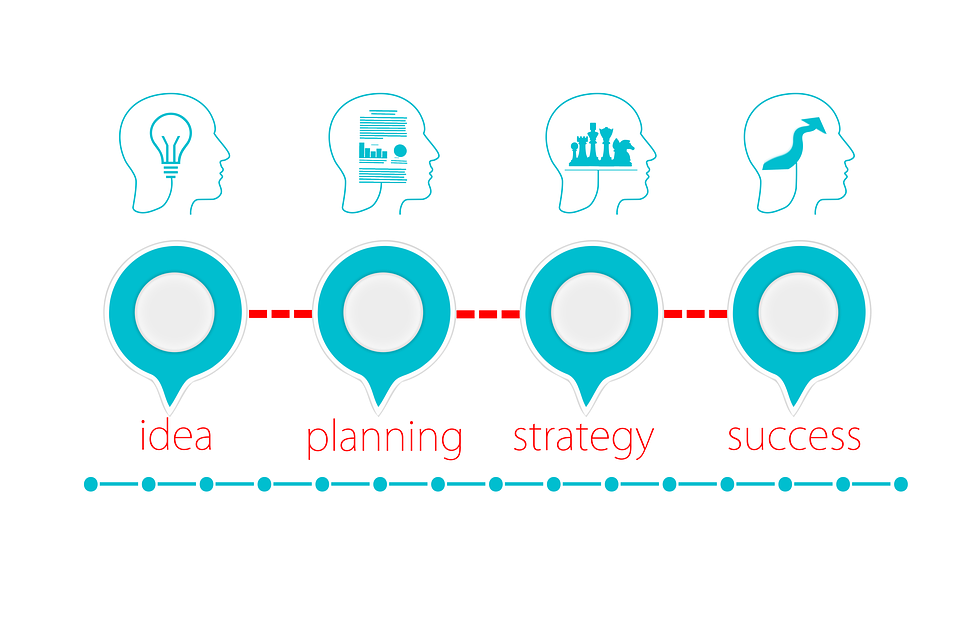Achieving financial freedom is a goal that many people aspire to, yet it can be difficult to know where to start. With so many different strategies and approaches to personal finance, it can be overwhelming to know which path to take. However, by breaking down the process into six key steps, it is possible to create a plan that will help you achieve your financial goals and retire within 15 years.
Step 1: Develop the Right Mindset
The first step to achieving financial freedom is to develop the right mindset. This means believing that financial freedom is possible, even if it may seem challenging or impossible at first. It also means being willing to think differently than the majority of people when it comes to money.

Developing the right mindset requires a willingness to take risks and make sacrifices. It means being willing to invest time and money into your financial education and being patient as you work towards your goals. It also means being willing to prioritize your financial goals over short-term gratification, such as buying a new car or going on an expensive vacation.
One way to develop the right mindset is to surround yourself with people who share your values and financial goals. This may mean finding a mentor or joining a community of like-minded individuals who can offer support and guidance as you work towards financial freedom.
Read also: Mastering the Rich vs Poor Mindset: Lessons from Rich Dad Poor Dad Classic
Step 2: Create a Financial System and Start Investing
The second step to achieving financial freedom is to create a financial system and start investing. This means developing a plan for how you will manage your money, including your income, expenses, savings, and investments.
One way to create a financial system is to use the simple wealth formula of income minus expenses equals investments plus savings. This formula can help you prioritize your investments and ensure that you are not overspending on unnecessary expenses.
Investing your money wisely is also critical to achieving financial freedom. This may involve investing in assets that have the potential to generate income and increase in value over time, such as stocks, real estate, or business ventures.
However, it is important to remember that investing carries risks, and it is essential to educate yourself about the different investment options available and to consult with a financial advisor before making any investment decisions.
Recommended Reading: Tips for Beginner to make Investment in Stock Market
 Step 3: Pay Off Debt
Step 3: Pay Off Debt
Paying off debt is a crucial step towards achieving financial freedom. Debt can be a major barrier to achieving your financial goals and can significantly limit your options. By paying off your debt, you can free up money to invest and increase your financial stability.
One approach to paying off debt is to focus on paying off high-interest debt first, such as credit card debt. This can help you reduce the amount of interest you are paying over time and free up money to put towards other financial goals.
It may also be helpful to develop a debt repayment plan that outlines how much you will pay towards each debt each month and when you plan to have each debt paid off.
Step 4: Invest in Income-Generating Assets
Investing in income-generating assets is another key step towards achieving financial freedom. These assets can provide a steady stream of income and increase in value over time, which can significantly increase your net worth.

One way to invest in income-generating assets is to purchase rental properties. Rental properties can provide a steady stream of rental income and can increase in value over time. However, it is important to do your research and ensure that you are investing in a property that is likely to appreciate in value and attract reliable tenants.
Another way to invest in income-generating assets is to invest in dividend-paying stocks. These stocks pay out a portion of their earnings to shareholders in the form of dividends, which can provide a steady stream of income over time.
Recommended Reading: Building a Fortune Through Stocks: What We Can Learn from Warren Buffet’s Success
Step 5: Create Multiple Streams of Income
Creating multiple streams of income is the fifth step towards achieving financial freedom. By diversifying your income sources, you can increase your financial stability and reduce your reliance on a single source of income.
One way to create multiple streams of income is to start a side hustle or small business. This can involve selling products or services online, freelancing, or starting a consulting business.
Another way to create multiple streams of income is to invest in passive income streams, such as rental properties, dividend-paying stocks, or peer-to-peer lending. These income streams require minimal effort and can provide a steady source of income over time.
It is important to note that creating multiple streams of income requires a significant amount of time, effort, and dedication. However, the long-term benefits can be substantial and can significantly increase your financial stability and freedom.
Step 6: Plan for Retirement
The final step towards achieving financial freedom is to plan for retirement. This involves developing a retirement plan that outlines your financial goals and the steps you need to take to achieve them.
One way to plan for retirement is to calculate how much money you will need to save in order to retire comfortably. This will depend on a number of factors, such as your current age, your expected retirement age, and your lifestyle goals.

It is also important to consider the different retirement savings options available, such as 401(k) plans, individual retirement accounts (IRAs), and other retirement savings vehicles. Consulting with a financial advisor can help you identify the best retirement savings options for your needs and goals.
Finally, it is important to periodically review and adjust your retirement plan as your financial goals and circumstances change. This can help ensure that you stay on track towards achieving your financial goals and retiring within your desired timeframe.

Achieving financial freedom requires a long-term commitment to financial education, planning, and discipline. While the journey towards financial freedom may be challenging, the long-term benefits are well worth the effort.

